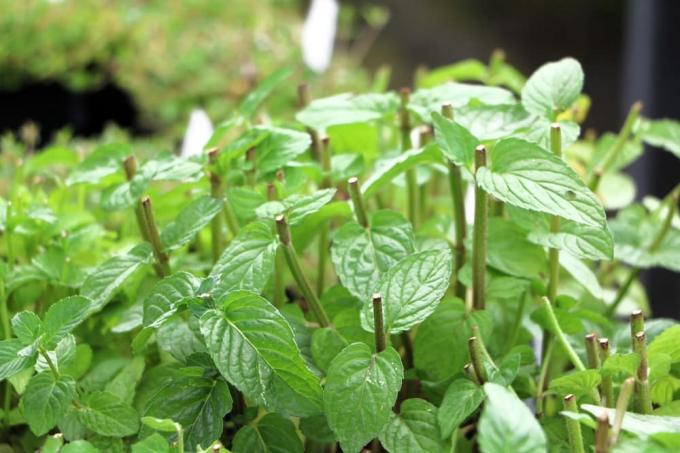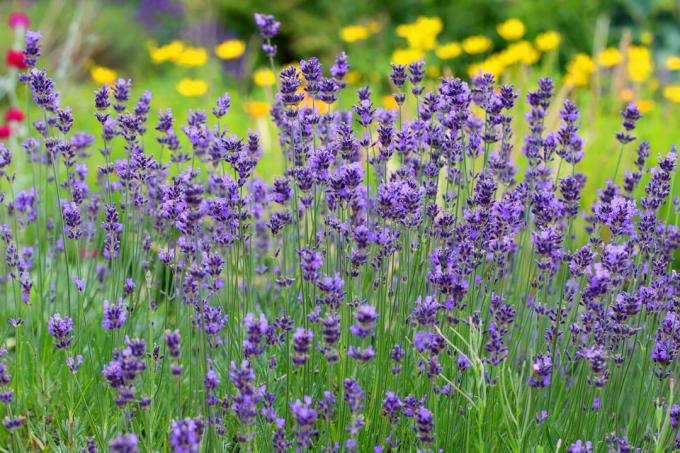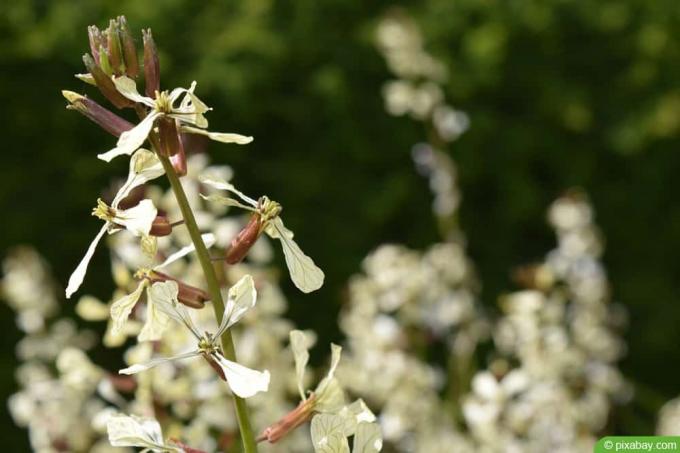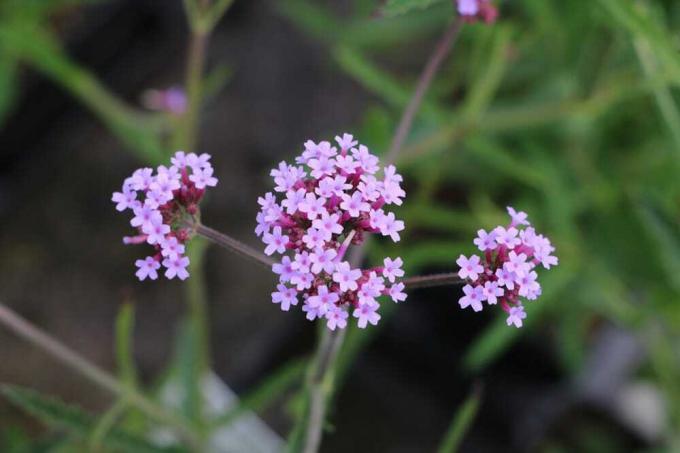

Table of contents
- Harvest right
- time of harvest
- heyday
- Edible flowers
Peppermint is widespread and has established itself as a popular medicinal herb in the preparation of drinks and food. In addition to the diverse uses, the plant is also extremely easy to care for. The plant can be cultivated both in the garden bed and in a flower pot on the balcony or terrace. However, the rumor persists in popular belief that peppermint becomes poisonous after flowering.
Harvest right
Peppermint has the botanical name Mentha piperita and belongs to the mint family. The herbal plant can be brewed as a tea or used to refine salads. In addition, the spicy leaves serve as a component of delicious cocktails. As soon as the plant has developed enough leaves in spring, you can pick off a few of them at a time. However, too many should never be removed at once, so as not to unnecessarily weaken the growth. At the end of autumn, the plants should be cut down completely to increase their winter hardiness. However, the stems that are harvested late are only suitable for consumption when the summer months have been very warm and dry. As a result of a cool and rainy summer, peppermint leaves can develop only a slight flavor aroma.
- Picking the leaves early in the morning is ideal
- Pluck carefully from the plant
- Alternatively, cut off whole stems
- Cut back the desired stem as far as possible
- Stems sprout again after harvesting
- In general, peppermint can be harvested until the first frost
- Tastes equally good fresh or dried
- Leaves can be frozen for long shelf life
Tip:
When harvesting, the stalks must not tear under any circumstances, as this is where pest infestation can quickly spread. Therefore, only sharp and disinfected cutting tools should be used.
time of harvest

During the flowering period, the peppermint leaves lose their intensity in taste, as the herbal plant invests all its energy in the development of the flowers. The seeds then form from the flowers, which are used for propagation. This is a crucial process in the life cycle of the plant, more important than the continuous sprouting of new leaves. Therefore, during the flowering phase, the leaves contain far fewer essential oils and lose their distinctive mint taste. If the growth becomes too large, then it should be pruned back generously at several points in time. However, the leaves should not be consumed if they are infected with diseases or pests. In this case, appropriate control measures must first be taken before the plant is suitable for consumption again.
- Small amounts can be harvested continuously
- Remove more leaves in spring
- Harvest a large portion of the leaves before flowering
- Individual leaves can also be harvested during the flowering period
- Then the leaves are less intense in taste
- Plant never becomes poisonous
- After the flowers have faded, the taste of the leaves becomes tart
- Even then, they can still be harvested
- Prune vigorously when growth is vigorous
- Severe pruning possible until September or October, depending on the weather
Tip:
If the leaves were harvested during flowering and taste extremely tart, then they should not be eaten fresh. In this case, drying the leaves is a good idea, as it loses some of the bitter taste.
heyday

The flowering time can differ depending on the sowing and the weather. A rumor has spread among hobby gardeners that the leaves of peppermint can no longer be harvested at this point, as the plant then becomes poisonous. However, this rumor is definitely not true. After flowering, seeds can be collected from the flowers, but only if the plant has been fertilized beforehand. Then the completely dried flowers should be picked very carefully from the plant and shaken out lightly. The seeds contained in it then fall out all by themselves.
- Usually flowers between June and August
- May flower until September during warm weather
- Forms small, white-pink flowers
- Leaves are then less aromatic, but not poisonous
- Taste a bit bitter during and after flowering
- Seeds are formed in the flowers for reproduction
Edible flowers
In addition to the leaves of peppermint, the flowers can also be eaten. However, the flowers lack the spicy aromas, so they are not particularly suitable for brewing peppermint tea. In addition, the flowers are also not suitable for the production of peppermint oil, as they contain almost no essential oils.
- Flowers are suitable as an ingredient for desserts
- Can be processed into jam and syrup
- Give the summer punch a fresh taste
- Nice to look at as a spicy garnish on the salad
 Home editorial office
Home editorial office
Learn more about garden herbs

Lady's mantle: 9 tips for planting, caring for and cutting
The lady's mantle can be found in almost every garden. There are around 1,000 different species. Here's the best time to plant it and how to care for it. it is also clarified whether and how it has to be cut.

Lavender, Lavandula angustifolia: 14 tips of care
Compared to other lavender varieties, Lavandula angustifolia is hardy down to temperatures of -15°C. In addition, he does not place very high demands on the location. It only needs to be sunny and sheltered from the wind and it loves lean, well-drained and calcareous soil.

Rosemary leaves have white spots: what to do?
Rosemary can be affected by white spots all year round. Before using home remedies, the problem should be investigated. If site conditions and care measures are optimal, diseases and pests can be the cause. Fungi require different control measures than harmful insects.

Rocket is blooming: is it still edible when blooming?
Rocket, also known as rocket, is a traditional cultivated plant that has been somewhat forgotten in recent years. It is now back in fashion and can be found in numerous dishes as a raw vegetable salad, side dish or herb.

Make your own mint tea – What is the effect of fresh mint tea?
Mint tea tastes best when you brew it from freshly picked mint leaves. In this way, the aromatic herb unfolds its healing effect against all kinds of ailments. However, there are also contraindications, because fresh mint tea can also have undesirable side effects.

c: Profile | Caring for and harvesting verbena
Verbena has established itself as a popular plant in the local latitudes thanks to its strong growth potential and long-lasting flowering period. In addition to a distinctive appearance, the plant known as Verbena also has healing properties. This places certain demands on care and location.



